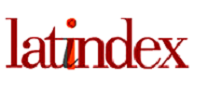Libras, bilinguismo y educación bilingüe: el territorio de los sordos.
DOI:
https://doi.org/10.5216/sig.v32.64643Palabras clave:
Bilingüismo. Lengua de Signos. Educación Bilingue.Resumen
Comunidad lingüística no se trata solo de personas que habitan en ciertos espacios. Los principios que guían los derechos lingüísticos adoptan la idea de que el espacio territorial no está clasificado como un área geográfica, sino como espacio social y funcional esencial para el desarrollo completo del lenguaje. En este sentido, se realizó una investigación bibliográfica (OLIVEIRA, 2003, 2011; GROSJEAN, 2008, 2016; QUADROS, 2019; PLAZA-PUST, 2012; ANN, 2004), que predispuso a discutir aspectos que respalden los presupuestos teóricos sobre el Bilingüismo y la Educación Bilingüe desde una perspectiva de la esfera pública y de las consideraciones de la comunidad sorda.
Descargas
Citas
ANN, Jean. Bilingualism and language contact. In: LUCAS, Ceil. The Sociolinguistics of Sign Languages. Cambridge: University Press, 2004.
BRASIL. Lei 10.436, de 24 de abril de 2002. Poder Executivo, Brasília, DF, 24 abr. 2002. Disponível em: http://www.planalto.gov.br/ccivil_03/leis/2002. Acesso em: 13 out. 2014.
BRASIL. Decreto № 5.626, de 22 de dezembro de 2005. Diário Oficial da União, Poder Executivo, Brasília, DF, 22 dez. 2005. Disponível em: http://www.planalto.gov.br/ccivil_03/_ato2004-2006/2005/decreto/d5626.htm. Acesso em: 11 jun. 2018.
BRASIL. Decreto № 7.387, de 09 de dezembro de 2010. Diário Oficial da União, Poder Executivo, Brasília, DF, 27 jan. 2010. Disponível em: http://www.planalto.gov.br. Acesso em: 07 ago. 2015.
BRASIL. Nota técnica № 005 / 2011 / MEC / SEESP / GAB. Ministério da Educação, Secretaria de Educação Especial, Brasília, DF, 2011. Disponível em: http://portal.mec.gov.br/index.php?option=com_do-cman&view=download&alias=9959-nota-tecnica-05-2011-secadi&Itemid=30192. Acesso em: 11 jun. 2018.
BRASIL. Lei № 13.005, de 25 de junho de 2014. Diário Oficial da União, Poder Executivo, Brasília, DF, 25 jun. 2014. Edição Extra, p. 1. Disponível em: http://www.planalto.gov.br/ccivil_03/_ato2011-2014/2014/lei/l13005.htm. Acesso em: 11 jun. 2018.
BRASIL. Ministério da Educação. Plano Nacional de Educação 2014-2024. Brasília, 2014a. Disponível em: http//pne.mec.gov.br. Acesso em: 11 jun. 2018.
BRASIL. Relatório do Grupo de Trabalho, designado pelas Portarias № 1.060/2013 e № 91/2013, contendo subsídios para a PolíticaLinguística de Educação Bilíngue - Língua Brasileira de Sinais e Língua Portuguesa. MEC/SECADI. Brasília, 2014b. Disponível em: http://www.bibliotecadigital.unicamp.br/document/?code=56513. Acesso em: 11 nov. 2018.
BRASIL. Lei nº 13.146, de 06 de julho de 2015. Diário Oficial da União, Poder Executivo, Brasília, DF, 06 juL. 2015. Disponível em: http://www.planalto.gov.br/ccivil_03/_ato2011-2014/2014/lei/l13005.htm. Acesso em: 11 nov. 2018.
BRASIL. Decreto nº 9.665, de 02 de janeiro de 2019. Diário Oficial da União, Poder Executivo, Brasília, DF, 02 jan. 2019. Disponível em: http://www.planalto.gov.br/ccivil_03/_Ato2019-2022/2019/Decreto/D9665.htm. Acesso em: 15 fev. 2019.
FENEIS. Nota Oficial: Educação de Surdos na Meta 4 do PNE. 2013. Disponível em: http://blog.feneis.org.br/nota-meta-4-do-pne/. Acesso em: 11 jun. 2018.
FERNANDES, Eulália. Linguagem e surdez. Porto Alegre: Artmed, 2003.
GROSJEAN, François. O direito da criança surda de crescer bilíngue. Universidade de Neuchâtel, Suíça: 2016, p. 1-5.
GROSJEAN, François. Individual bilingualism. In: BRITO DE MELLO, Heloisa. The Encyclopedia of Language and Linguistics. Oxford: Pergamon Press, 2008, p. 163-176.
HALLIDAY, Michael. El Lenguaje como Semiotica Social. México: Fondo de Cultura Economica, 1979.
PLAZA PUST, Carolina. Deaf education and bilingualism. In: PFAU, Roland.; STEINBACH, M.arkus; WOLL, Bencie. Sign Language: Na International Handbook. Berlin: De Gruyter Mouton, 2012. p. 949-979.
MIRANDA, Dayse. As mediações linguísticas do intérprete de língua de sinais na sala de aula inclusiva. Ano 2010, 178 f. Dissertação de Mestrado. Faculdade de Educação. UFMG, Belo Horizonte.
MIRANDA, Dayse. A multimodalidade no ensino de língua portuguesa como segunda língua para surdos: análise do uso do livro didático adaptado em Libras. Ano 2019, 276 f . Tese de Doutorado. Posling. CEFET-MG, Belo Horizonte.
OLIVEIRA. Gilvan. Declaração Universal dos Direitos Linguísticos: Novas Perspectivas em Política Linguística. Florianópolis: Mercado de Letras, 2003.
OLIVEIRA. Gilvan. Políticas Linguísticas como Políticas Públicas. In: GUADELUPE, T. B.; OURIQUES, N. D. Anuário Educativo Brasileiro: Visão Retrospectiva. São Paulo: Cortez, 2011.
QUADROS, Ronice; LILLO-MARTIN, Diane; PICHLER, Deborah. O que bilíngues bimodais têm a nos dizer sobre desenvolvimento bilíngue? In: Revista Letras de Hoje, Porto Alegre, v. 48, № 3, p. 380–388, 2013.
QUADROS, Ronice; LILLO-MARTIN, Diane; PICHLER, Deborah. Libras. São Paulo: Parábola Editorial, 2019.
REFORMA POMBALINA (século XVIII). Disponível em: https://pt.wikipedia.org/wiki/Per%C3%ADodo_pombalino. Acesso em: 29 jun. 2020.
REVISTA EXAME - Disponível em: https://exame.abril.com.br/negocios/dino/educacao-bilingue-cresce-em-todas-as-regioes-do-brasil-shtml/.www.dino.com.br. Rede de distribuição e divulgadora de notícias que garante a publicação dos conteúdos enviados por assessorias de imprensa ou diretamente por empresas em centenas de publishers. Acesso em: 11 nov. 2018.
SALGADO, Ana Claudia. Medidas de Bilingualidade: uma proposta. Ano 2008, 140f. Tese - PUC-Rio, Rio de Janeiro.
SANTOS, Alessandra. Multilinguismo em Bonfim/RR: o ensino de Língua Portuguesa no contexto da diversidade linguística. 2012. 144 f. Tese – UNB, Brasília, 2012.
SILVA, Giseli. O bilinguismo dos surdos: acesso às línguas, usos e atitudes linguísticas. Revista Leitura, Maceió, v. 1, № 58, p. 124-144, Jan./Jun 2017a. ISSN 2317-9945
STURMER, Ingrid; THOMA, Adriana. Políticas educacionais e linguísticas para surdos: discursos que produzem a educação bilíngue no Brasil na atualidade. 37ª Reunião Nacional da ANPED. Florianópolis: UFSC. 2015.
Descargas
Publicado
Cómo citar
Número
Sección
Licencia
Derechos de autor 2021 Signótica

Esta obra está bajo una licencia internacional Creative Commons Atribución-CompartirIgual 4.0.
Autoras (s) autorizan a Signótica a publicar artículo, si es aceptado, firmando su contribución como original y no sometida a otra editorial para publicación. En caso de aceptación y publicación, artículos de Signo tienen licencia Creative Comons BY-NC-ND (Asignación + NoComercial + SemDerivaciones)





1.png)





